Ocrim1967 - Senza Titolo

More Posts from Ocrim1967 and Others










🐱:(source)










In October 1980 the Voyager probe discovered three small moons of Saturn, Pandora, Atlas and Prometheus. (source & images)
Google Classroom FINALLY lets you add a “Materials” section under “Classwork”
Literally two days ago they added the ability to add a new kind of post under a Classwork topic. “Materials” (instead of Assignment or Question)
This is your workaround for losing the “About” page. Set up a topic called “About” or “Resources”, then add a “Materials” post under that topic. Boom, done!

ALSO, if you created a Google Classroom before the update, and only have the Stream and People pages, you can now manually add a Classwork page by clicking the grey question mark in the bottom left corner, then selecting “Add Classwork page”.

Try it out, today!
Your Friendly Neighborhood Google for Education Certified Trainer,
-WCT










This Is How Mastering Dark Matter Could Take Us To The Stars
“Because dark matter is everywhere, we wouldn’t even need to carry it with us as we traversed the Universe. As far as we understand it — and admittedly, we need to understand it a lot farther — dark matter could truly deliver our dream of the ultimate fuel. It’s abundant all throughout our galaxy and beyond; it should have a non-zero annihilation cross-section with itself; and when it does annihilate, it should produce energy with 100% efficiency.
Perhaps, then, most of us have been thinking about experiments seeking to directly detect dark matter all wrong. Yes, we want to know what makes up the Universe, and what the physical properties of its various abundant components truly are. But there’s a science-fiction dream that could come true if nature is kind to us: unlimited, free energy just waiting there for us to harness, no matter where in the galaxy we go.
Mastering dark matter is the endeavor that just might make it so.”
When we talk about our dreams of traveling to the stars, it normally involves a mythical, futuristic form of travel that goes beyond the known laws of physics. Why’s that? Because even if you increase the efficiency of your rocket fuel far beyond the limitations of any chemical-based reaction we know of, you’d still be limited in how far you could go by the mass of your spacecraft and the fuel you were able to take with you on board. You’d still have to accelerate (and decelerate) all the fuel you brought with you, until you ran out. If only there were a 100%-efficient fuel source that was ubiquitous all throughout the galaxy and beyond.
There is: dark matter. Here’s why it’s so important to study, understand, and eventually, fulfill the dream of harnessing it!








(Source)





CAPE CANAVERAL, Fla. – Space shuttle Discovery lifts off Launch Pad 39A in a billowing swirl of smoke and steam at NASA’s Kennedy Space Center in Florida, beginning its final flight, the STS-133 mission. Launch to the International Space Station was at 4:53 p.m. EST.
Credit: NASA














Happy 230th Birthday, Enceladus, Our Solar System’s Greatest Hope For Life Beyond Earth
“It is still a complete unknown whether Earth is the only world in the Solar System to house any form of life: past or present. Venus and Mars may have been Earth-like for a billion years or more, and life could have arisen there early on. Frozen worlds with subsurface oceans, like Enceladus, Europa, Triton or Pluto, are completely different from Earth’s present environment, but have the same raw ingredients that could potentially lead to life as well.
Are water, energy, and the right molecules all we need for life to arise? Finding even the most basic organisms (or even the precursor components of organisms) anyplace else in the Universe would lead to a scientific revolution. A single discovered cell in the geysers of Enceladus would be the most momentous discovery of the 21st century. With the recent demise of Cassini, on the 230th anniversary of Enceladus’ discovery, the possibility of finding the incredible compels us to go back. May we be bold enough to make it so.”
On this date in 1789, William Herschel, armed with the most powerful telescope known to humanity at the time (you can get a lot of grant money when you discover the planet Uranus and name it after the King), discovered a relatively small moon of Saturn just 500 kilometers across: Enceladus. For some 200 years, Enceladus was never seen as more than a single pixel across, until the Voyager probes flew by it. What they revealed was a remarkable, unique world in all the Solar System. Now that the Cassini mission is complete, we can look back at all we know about this world, and all the signs point to a remarkable story: there’s a subsurface ocean, possibly suitable as a home for undersea life.
Is Enceladus truly our Solar System’s best hope for life beyond Earth? That’s debatable, but there’s every reason to be hopeful. Come get the story here.

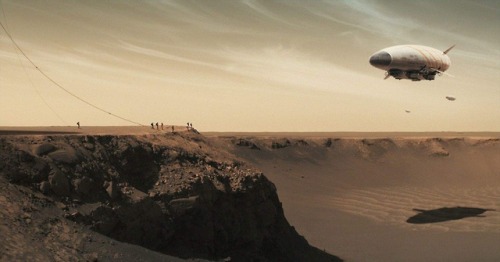
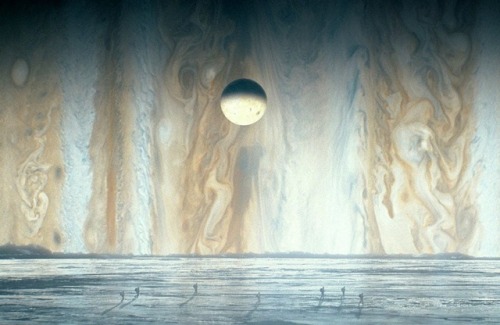

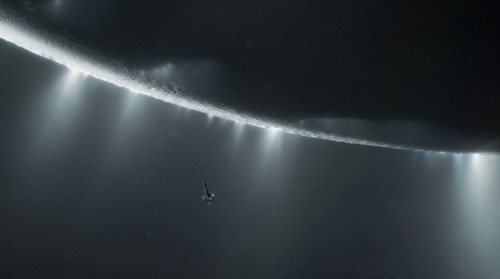
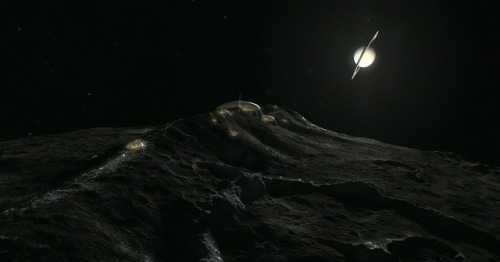
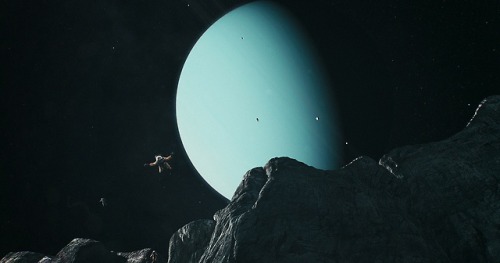
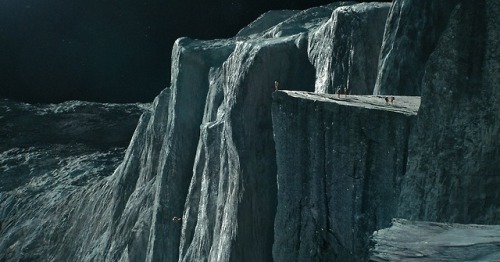

Will we one day explore the worlds of our solar system? How long will this take?
We have a diversity of worlds in our solar system. Majestic places…
Imagine being able to visit Mars and its hostile climate. Imagine being able to visit the moons of Jupiter, observe Io: the volcanic moon, Europa, the frozen moon and Ganymede a moon larger than Mercury itself and that has its own magnetic field. Imagine visiting the moons of Saturn and maybe passing close to your rings… Imagine orbiting or floating through Titan’s atmosphere and closely watching its lakes and seas of methane and liquid ethane. Imagine getting to know the geysers of Enceladus, the valleys of Tethys, and the craters of Mimas… Imagine being able to see the moons of Uranus and have a view of Verona Rupes, the largest cliff of the solar system, located in Miranda. Imagine being able to be in Triton and to be able to observe the cold and azualdo Neptune in the sky…
All cats are beautiful 🐱❤️




















-
 bxbygvrl1263 liked this · 5 years ago
bxbygvrl1263 liked this · 5 years ago -
 random-fireworks liked this · 5 years ago
random-fireworks liked this · 5 years ago -
 lord-starquaad reblogged this · 5 years ago
lord-starquaad reblogged this · 5 years ago -
 catyuy reblogged this · 5 years ago
catyuy reblogged this · 5 years ago -
 northmanthor reblogged this · 5 years ago
northmanthor reblogged this · 5 years ago -
 northmanthor liked this · 5 years ago
northmanthor liked this · 5 years ago -
 fiftycookies liked this · 5 years ago
fiftycookies liked this · 5 years ago -
 16fahri liked this · 5 years ago
16fahri liked this · 5 years ago -
 kaptainkdawg liked this · 5 years ago
kaptainkdawg liked this · 5 years ago -
 queen-of-alagaesia liked this · 5 years ago
queen-of-alagaesia liked this · 5 years ago -
 dangara2610 liked this · 5 years ago
dangara2610 liked this · 5 years ago -
 mloyasworld liked this · 5 years ago
mloyasworld liked this · 5 years ago -
 mrcrybaby liked this · 5 years ago
mrcrybaby liked this · 5 years ago -
 thepotatopancakepapers reblogged this · 5 years ago
thepotatopancakepapers reblogged this · 5 years ago -
 thepotatopancakepapers liked this · 5 years ago
thepotatopancakepapers liked this · 5 years ago -
 crazytooley liked this · 5 years ago
crazytooley liked this · 5 years ago -
 memento-mariii reblogged this · 5 years ago
memento-mariii reblogged this · 5 years ago -
 memento-mariii liked this · 5 years ago
memento-mariii liked this · 5 years ago -
 jeebssred liked this · 5 years ago
jeebssred liked this · 5 years ago -
 jusvankamp reblogged this · 5 years ago
jusvankamp reblogged this · 5 years ago -
 jusvankamp liked this · 5 years ago
jusvankamp liked this · 5 years ago -
 penumbra51302 liked this · 5 years ago
penumbra51302 liked this · 5 years ago -
 ledantome liked this · 5 years ago
ledantome liked this · 5 years ago -
 fish-fido liked this · 5 years ago
fish-fido liked this · 5 years ago -
 alxdrkgn reblogged this · 5 years ago
alxdrkgn reblogged this · 5 years ago -
 alxdrkgn liked this · 5 years ago
alxdrkgn liked this · 5 years ago -
 coonazz74 liked this · 5 years ago
coonazz74 liked this · 5 years ago -
 moments-not-milestones reblogged this · 5 years ago
moments-not-milestones reblogged this · 5 years ago -
 moments-not-milestones liked this · 5 years ago
moments-not-milestones liked this · 5 years ago -
 unstablesiren reblogged this · 5 years ago
unstablesiren reblogged this · 5 years ago -
 unstablesiren liked this · 5 years ago
unstablesiren liked this · 5 years ago -
 groundcontrol2385 reblogged this · 5 years ago
groundcontrol2385 reblogged this · 5 years ago -
 groundcontrol2385 liked this · 5 years ago
groundcontrol2385 liked this · 5 years ago -
 c0lor5 reblogged this · 5 years ago
c0lor5 reblogged this · 5 years ago -
 fagdykefrank liked this · 5 years ago
fagdykefrank liked this · 5 years ago -
 sn-pch-ps-blog liked this · 5 years ago
sn-pch-ps-blog liked this · 5 years ago